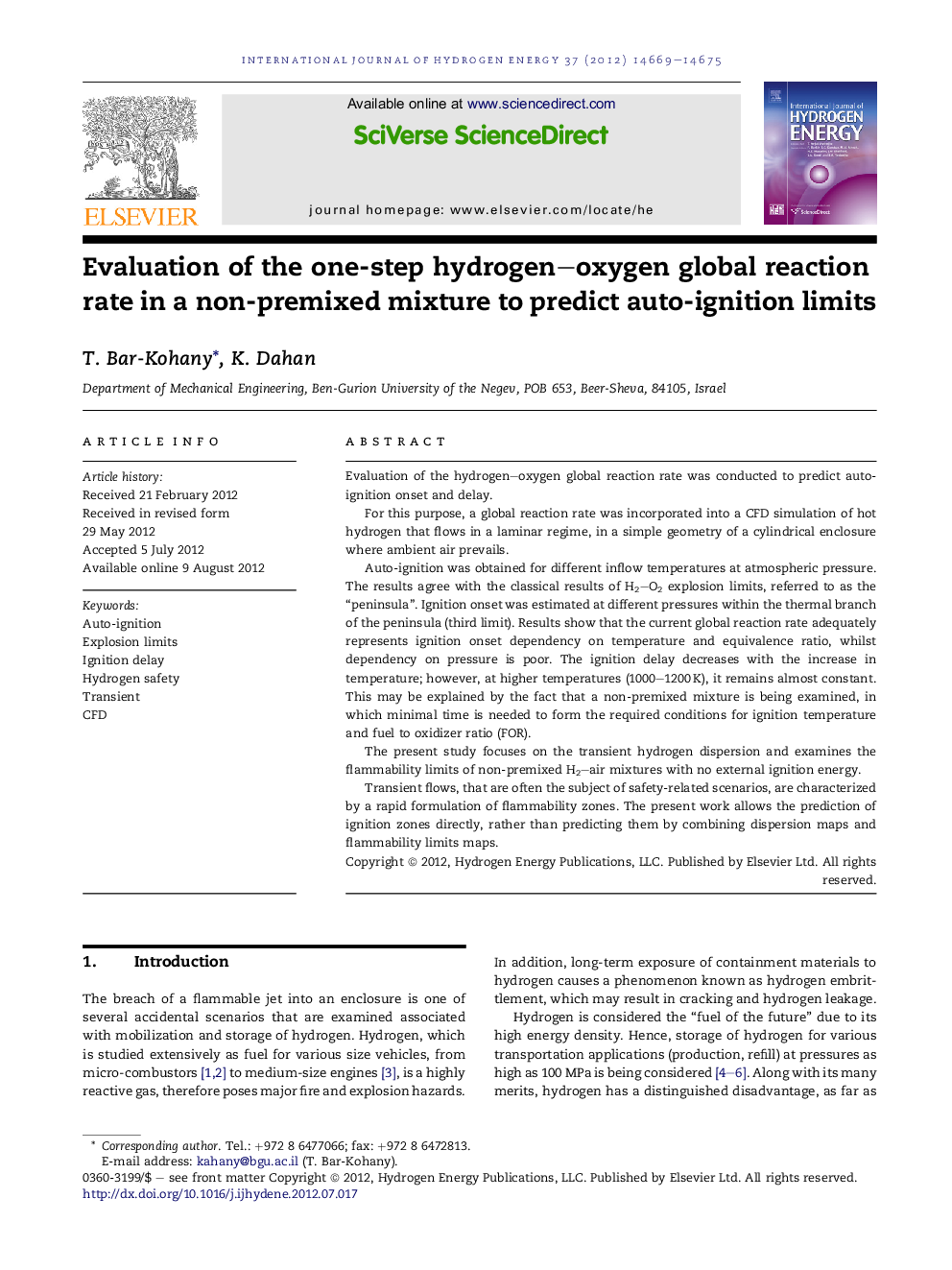| کد مقاله | کد نشریه | سال انتشار | مقاله انگلیسی | نسخه تمام متن |
|---|---|---|---|---|
| 1274815 | 1497550 | 2012 | 7 صفحه PDF | دانلود رایگان |

Evaluation of the hydrogen–oxygen global reaction rate was conducted to predict auto-ignition onset and delay.For this purpose, a global reaction rate was incorporated into a CFD simulation of hot hydrogen that flows in a laminar regime, in a simple geometry of a cylindrical enclosure where ambient air prevails.Auto-ignition was obtained for different inflow temperatures at atmospheric pressure. The results agree with the classical results of H2–O2 explosion limits, referred to as the “peninsula”. Ignition onset was estimated at different pressures within the thermal branch of the peninsula (third limit). Results show that the current global reaction rate adequately represents ignition onset dependency on temperature and equivalence ratio, whilst dependency on pressure is poor. The ignition delay decreases with the increase in temperature; however, at higher temperatures (1000–1200 K), it remains almost constant. This may be explained by the fact that a non-premixed mixture is being examined, in which minimal time is needed to form the required conditions for ignition temperature and fuel to oxidizer ratio (FOR).The present study focuses on the transient hydrogen dispersion and examines the flammability limits of non-premixed H2–air mixtures with no external ignition energy.Transient flows, that are often the subject of safety-related scenarios, are characterized by a rapid formulation of flammability zones. The present work allows the prediction of ignition zones directly, rather than predicting them by combining dispersion maps and flammability limits maps.
► A global reaction rate is incorporated into a CFD simulation.
► Computational evidence of auto-ignition is obtained within the thermal branch.
► Direct prediction of ignition zones is obtained.
► Ignition onset dependency on temperature is well predicted by the global reaction rate.
► Ignition onset dependency on pressure is poorly predicted by the global reaction rate.
Journal: International Journal of Hydrogen Energy - Volume 37, Issue 19, October 2012, Pages 14669–14675